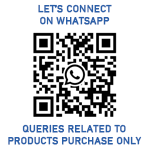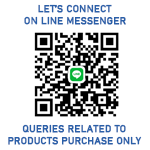Ensuring the safety of medical core equipment extends beyond the equipment itself to include its spare parts. Proper handling, storage, and management of these parts are crucial for the effective and safe operation of medical devices.
Here’s how to maintain essential safety for medical core equipment spare parts:
For any doubt & Query write us at: sales3@natronequipments.com
1. Procurement and Quality Control
- Authorized Suppliers: Source spare parts from authorized and reputable suppliers or manufacturers. Verify that the parts are genuine and meet quality standards.
- Certification: Ensure that spare parts come with appropriate certifications and documentation confirming their compliance with relevant safety and quality standards.
2. Proper Storage
- Environmental Conditions: Store spare parts under the environmental conditions specified by the manufacturer, such as temperature, humidity, and light exposure.
- Organization: Keep spare parts organized and clearly labeled to prevent confusion and ensure easy access. Use shelves or storage containers designed to protect the parts from physical damage and contamination.
3. Inventory Management
- Stock Control: Implement an inventory management system to keep track of spare parts. Monitor stock levels to ensure you have critical parts on hand and avoid shortages.
- Expiration Dates: Check and manage the expiration dates or shelf lives of spare parts. Replace or dispose of expired parts according to established guidelines.
4. Inspection and Handling
- Inspection: Upon receipt, examine spare parts for any signs of damage or defects. Verify that they match the specifications for the equipment they are intended to service.
- Handling: Handle spare parts with care to avoid physical damage. Use proper tools and techniques to prevent contamination or degradation of sensitive components.
5. Documentation and Record Keeping
- Records: Maintain detailed records of all spare parts, including procurement details, storage conditions, usage, and any incidents or issues. Document maintenance and replacement activities.
- Traceability: Ensure that each part is traceable from purchase through to its installation and use in the equipment.
6. Training and Competency
- Staff Training: Train staff on the proper handling, storage, and installation of spare parts. Ensure they understand the importance of using correct parts and following safety procedures.
- Procedures: Develop and enforce procedures for handling and installing spare parts to minimize the risk of errors and ensure compliance with safety protocols.
7. Safety and Compliance
- Regulatory Compliance: Adhere to relevant regulations and standards governing medical equipment and spare parts. This includes following protocols for the management, storage, and disposal of materials.
- Safety Checks: Perform safety checks before installing spare parts to ensure they are in good condition and compatible with the equipment. Follow manufacturer instructions for installation and use.
8. Maintenance and Calibration
- Regular Maintenance: Ensure that equipment is regularly maintained to avoid frequent replacements of spare parts. Adequate maintenance enhances the longevity of both the machinery and its replacement components.
- Calibration: Calibrate equipment as required to ensure that spare parts function correctly and that the equipment performs within specified parameters.
9. Emergency Procedures
- Response Plan: Have a plan in place for dealing with issues related to spare parts, such as defective parts or supply shortages. This should include procedures for rapid replacement and troubleshooting.
- Contingency: Maintain a contingency stock of critical spare parts to minimize downtime and ensure that equipment can be quickly repaired in case of an emergency.
10. Feedback and Improvement
- Feedback System: Implement a system for collecting feedback from staff regarding spare parts and their performance. Utilize this information to recognize and resolve any problems.
- Continuous Improvement: Regularly review and update procedures related to spare parts to incorporate new best practices, address emerging challenges, and enhance overall safety and efficiency.
Partner with NESPL for Optimal Safety of Medical Core Equipment
For unparalleled expertise in maintaining essential safety for medical core equipment spare parts, consider partnering with NESPL. As a leading supplier of high-quality equipment and spare parts, we ensure that your needs are met with precision and reliability.
Contact us to learn more about how our branded and high-quality spare parts can enhance the safety and performance of your medical equipment.
Must Visit to Explore more: https://www.natronequipments.com/medical-core-thermal-industry/medical-industry
Conclusion
By adhering to these best practices for managing medical core equipment spare parts, you ensure the safe and effective operation of your medical devices. Proper procurement, storage, and handling are crucial for maintaining equipment reliability and compliance with safety standards.
Consistent documentation, training, and compliance with regulations further enhance the overall safety and efficiency of medical equipment management. Implementing these strategies will help safeguard your equipment and improve the quality of care provided.







